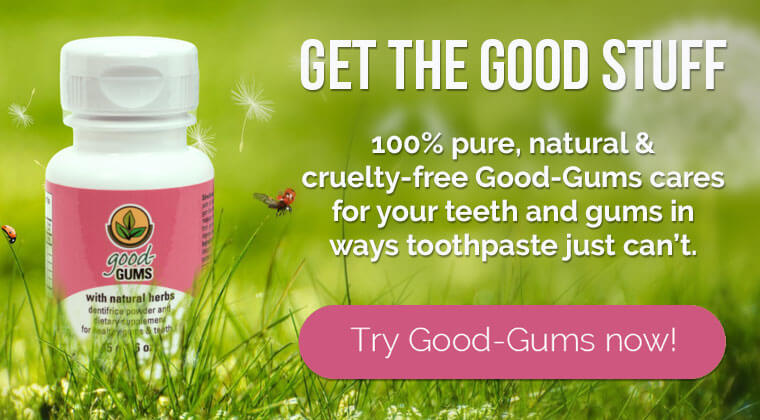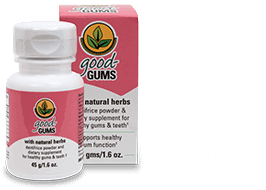Is Teeth Whitening safe?

Who doesn’t want a million-dollar smile, right? You feel more confident, more attractive and quite simply ooze health, beauty, and wellness. So we understand why people spend time, effort, and money trying to perfect their sparkly smiles; especially as it doesn’t take much to stain our beloved teeth.
But as it turns out, teeth whitening products can actually be quite damaging to your teeth in ways you may not expect.
Let’s talk about some of the ways conventional teeth whitening products can be harmful to your teeth and gums.
So, what’s so bad about teeth whitening products?
Here are a few issues that can arise when using teeth whitening products.
Wipes out collagen levels and destroys dentin
If you’ve taken a look at our Knowledge Base, you’ll see a whole section on whitening teeth, including various ways to keep your teeth white, even when they’re exposed to dark foods and drink (including herbs). Depending on the staining agent and on a person’s susceptibility to staining, there are a variety of alternatives, from rinsing with plain water, to toothbrush-polishing with plain water for even less than a minute, to toothbrush-polishing with baking soda, to polishing with a mixture of salt and baking soda. For teeth that are really susceptible to the most persistent staining, we even go so far as to recommend a slurry of 4% food-grade hydrogen peroxide (just 15 drops of it in a mixture of salt and baking soda is enough). Why would we recommend it on the one hand, and warn you about its dangers on the other? It’s all in the concentration.
The issue with many over-the-counter whitening products and concentrations dentists use is that the concentrations of hydrogen peroxide are much higher and therefore can damage tooth enamel. This 2017 study shows how concentrations of 10% and higher cause damage to tooth enamel, with concentrations of 30% causing “more severe alterations” to dentin. . Hydrogen peroxide seems to break down the collagen-rich dentin area of the tooth into smaller fragments, which wipes out collagen levels.
Kelly Keenen, PhD, associate professor of chemistry and biochemistry and molecular biology at Stockton University, says,
“Collagen seems especially susceptible to hydrogen peroxide. And while collagen can be replaced, provided that the pulp is healthy, it is a slow process.”
A 2019 study also found that another harmful whitening ingredient, carbamide peroxide, can affect the teeth by penetrating and reducing dentin in the teeth.
Gum irritation and heightened tooth sensitivity
Whether you get an in-office procedure at the dentist or an over-the-counter whitening product, all these treatments contain high levels of bleaching agents that, if the bleach comes into contact with your gums, could cause irritation. Tooth sensitivity is also another common side effect caused by the bleach in tooth whitening agents. Again, peroxide exposure is the issue here. According to the ADA, tooth sensitivity is due to the dental pulp becoming inflamed from exposure to peroxide during the treatment. The severity of the sensitivity is determined by the level of peroxide concentration.
So how can I make my teeth whiter without damaging my teeth?
As mentioned earlier, it’s important to stay well below the concentrations that can start to cause damage. Rinsing or polishing enamel while avoiding bleaching agents altogether (including hydrogen peroxide) is a failsafe way to stay below them. But if you find that’s not enough, a homemade slurry of salt (60%) and baking soda (40%) and about 15 drops (about 3/4 of a ml) of 4% food-grade hydrogen peroxide addresses even persistent stains
If you want to get the fastest results for gum improvement, but also want to increase the whiteness of your teeth, then consider brushing with your homemade slurry to remove stains after using our all-natural powder – Good-Gums – every morning, but at night leaving the residue of Good-Gums in your mouth without even rinsing. This will make room for a little more absorption by your gums while you sleep. If you have teeth that stain very easily, then consider brushing to remove stains both morning and night.
In our article, “5 ways to whiten your teeth naturally”, we list a few other ways that you can whiten your teeth naturally.
How else can I use Good-Gums with my natural teeth-whitening routine?
Good-Gums supports the health of your gums and teeth, and our ingredients support this goal. No flavorings, no colorings, and no teeth whitening agents. However, that doesn’t mean that you can’t whiten your teeth while using Good-Gums.
For many people, just using Good-Gums will make their teeth more stain-free than they’ve experienced in the past. For others, all that’s needed is a quick (less than a minute) polishing of the enamel with just plain water right after exposure to foods with intense color or to herbs (including possibly some herbs in Good-Gums).
Other people may need extra help when it comes to whitening, so they would benefit from polishing the enamel with simple baking soda (which is hardly abrasive at all). For the few people whose enamel is quite susceptible to staining, we recommend brushing with a mixture of baking soda and salt does the trick.
For the even fewer amount of people who need even more help to whiten their teeth, then we recommend our homemade slurry (15 drops of 3% or 4% food-grade hydrogen peroxide to the baking soda and salt); just remember to rinse off when done.
The 4% concentration is way below the threshold of 30% concentration that starts to damage dentin (which is softer than enamel), and it is tremendously lower than the concentration that starts to damage enamel. The higher concentrations in many of the at-home whitening products and in all the in-dentist-offices are a real cause for concern.
If you’d like to try out our all-natural tooth and gum formula and brighten your smile the natural way, click here.

Subscribe To Our Newsletter
Be the first to receive all our news, offers and natural oral health tips and articles.


